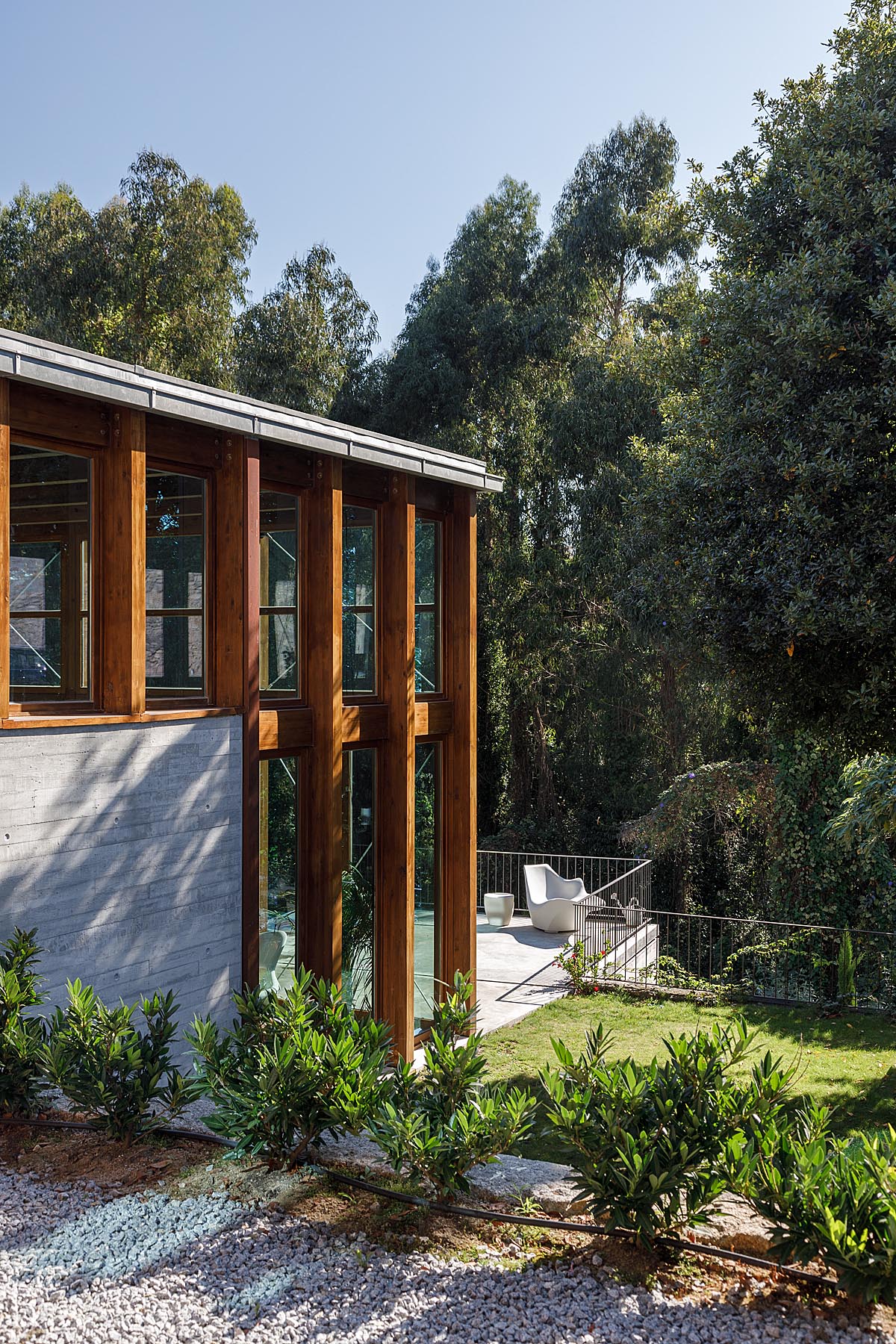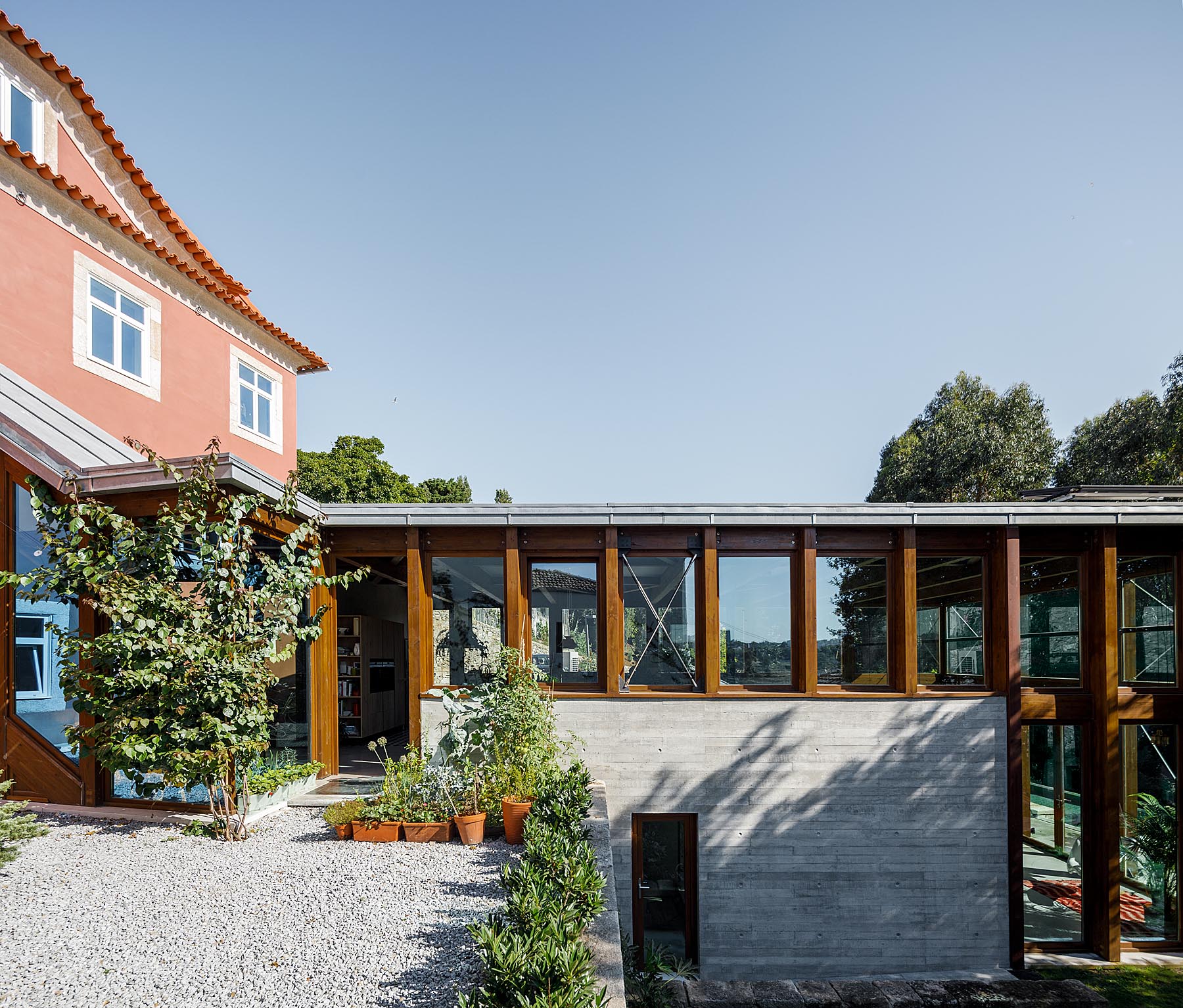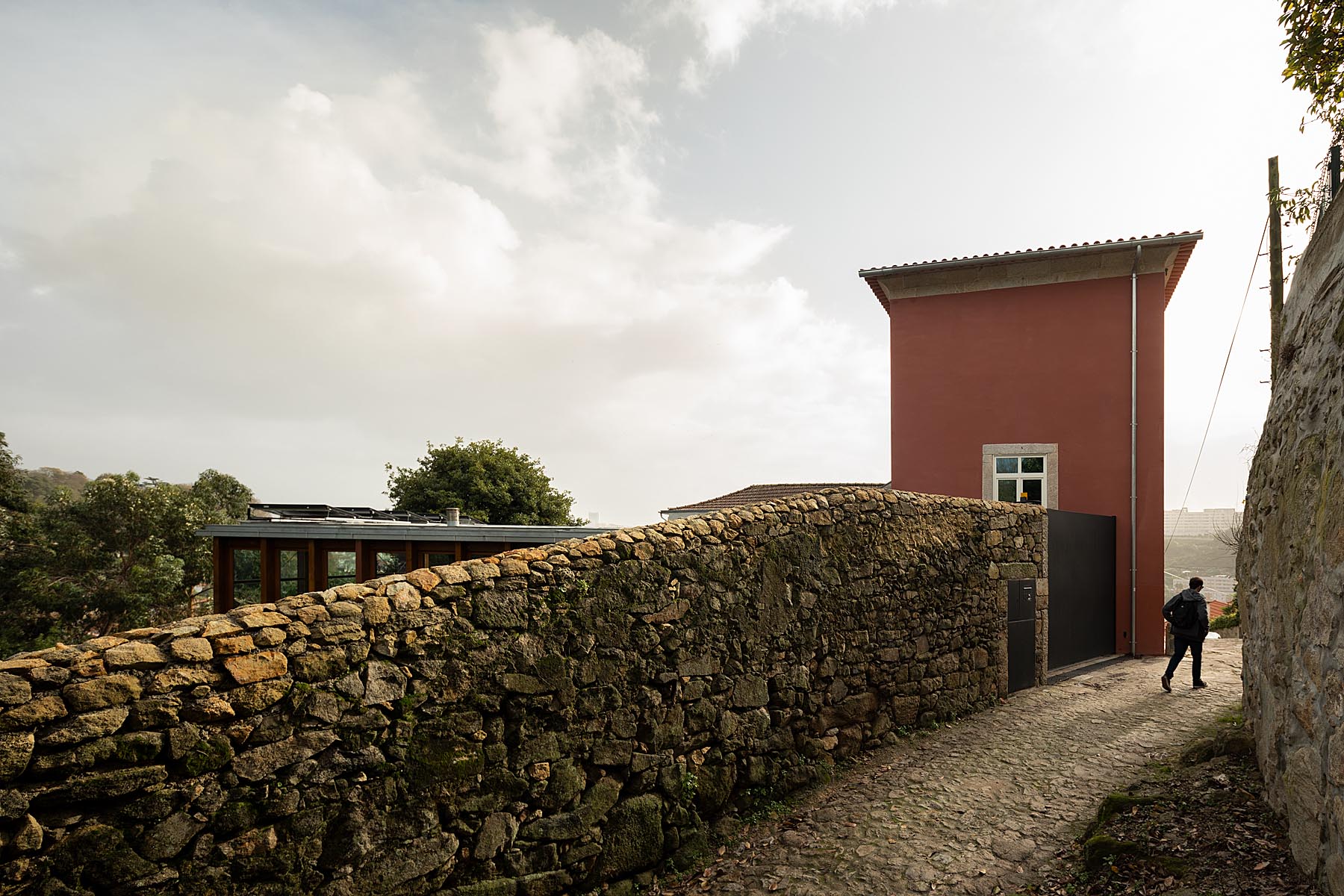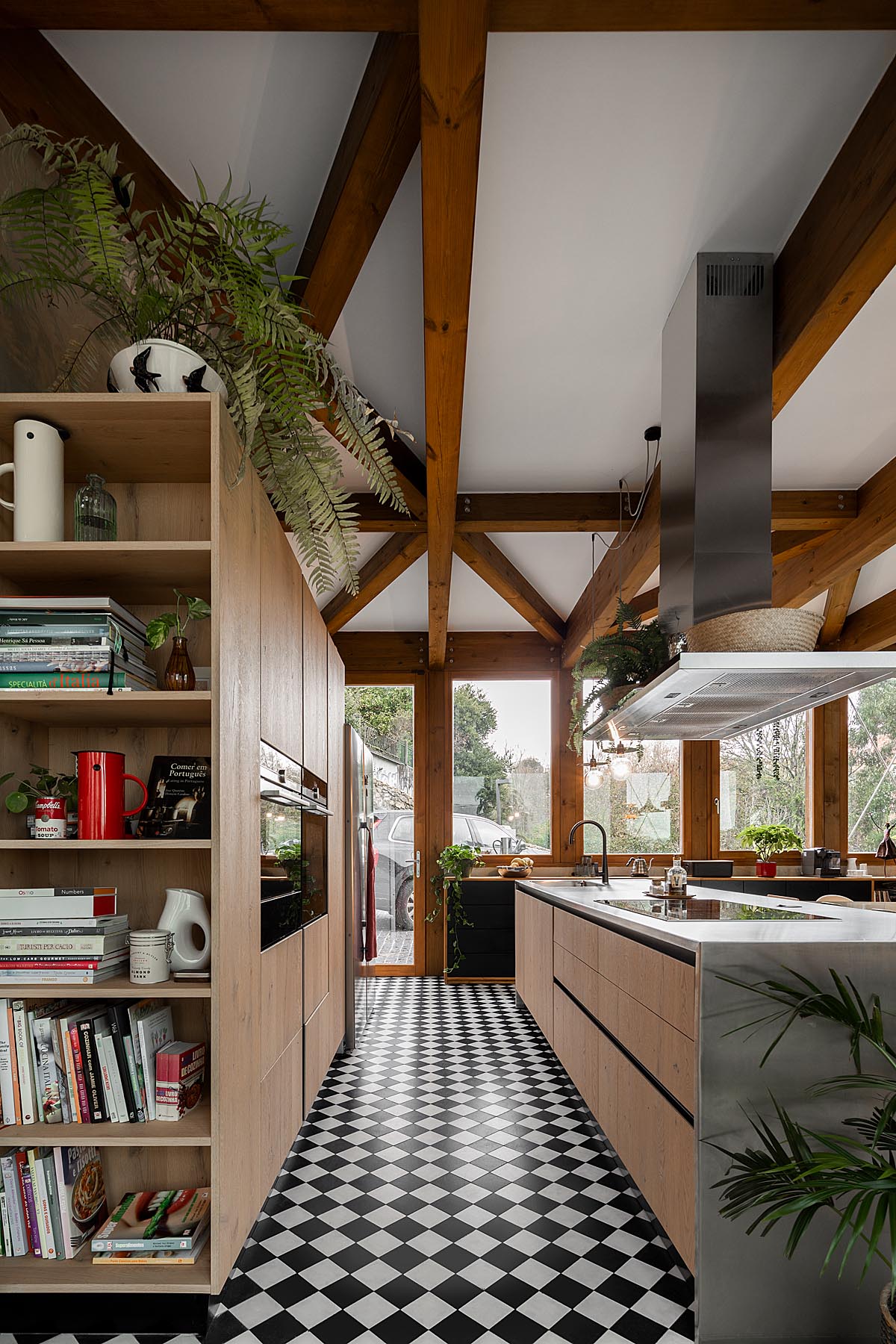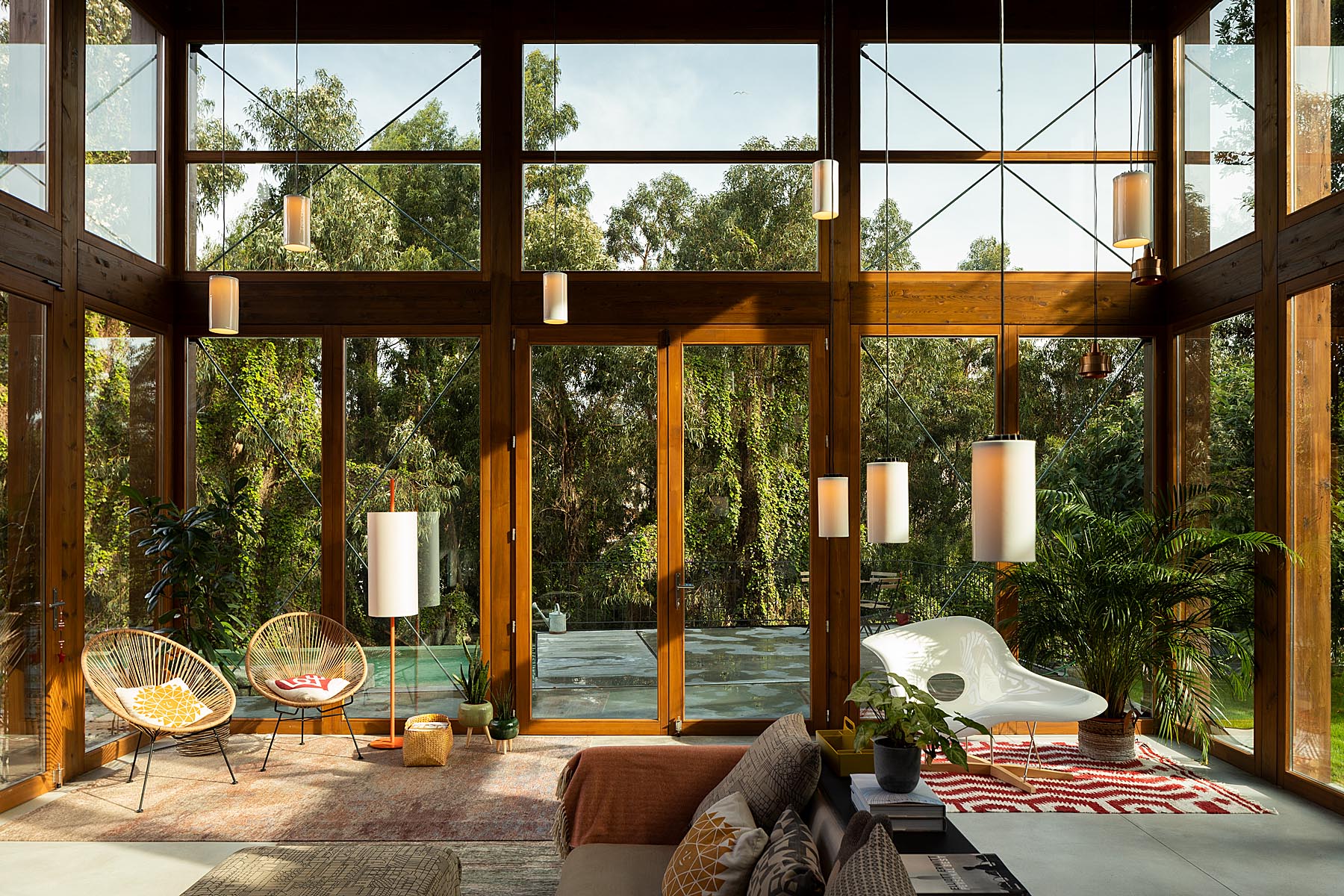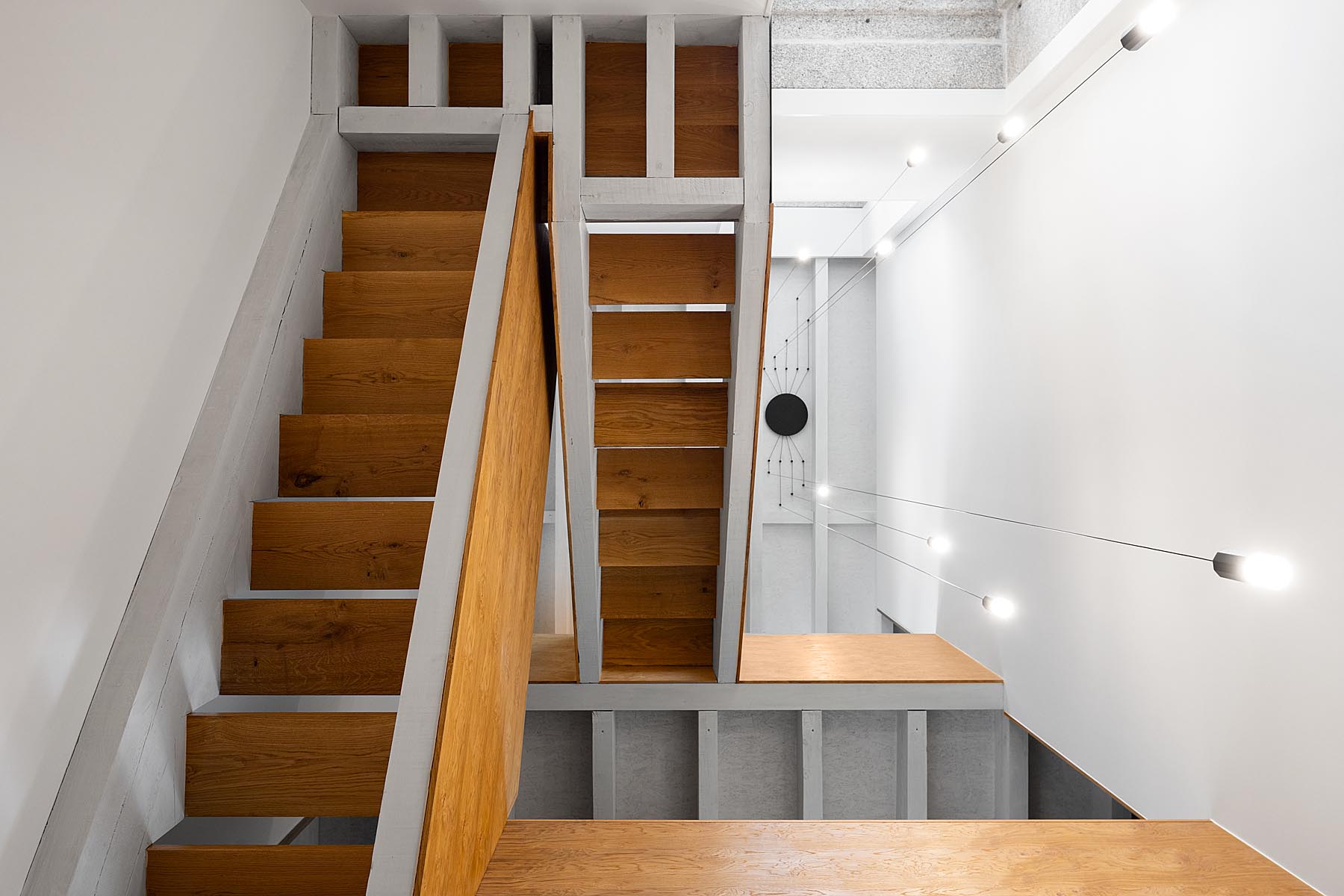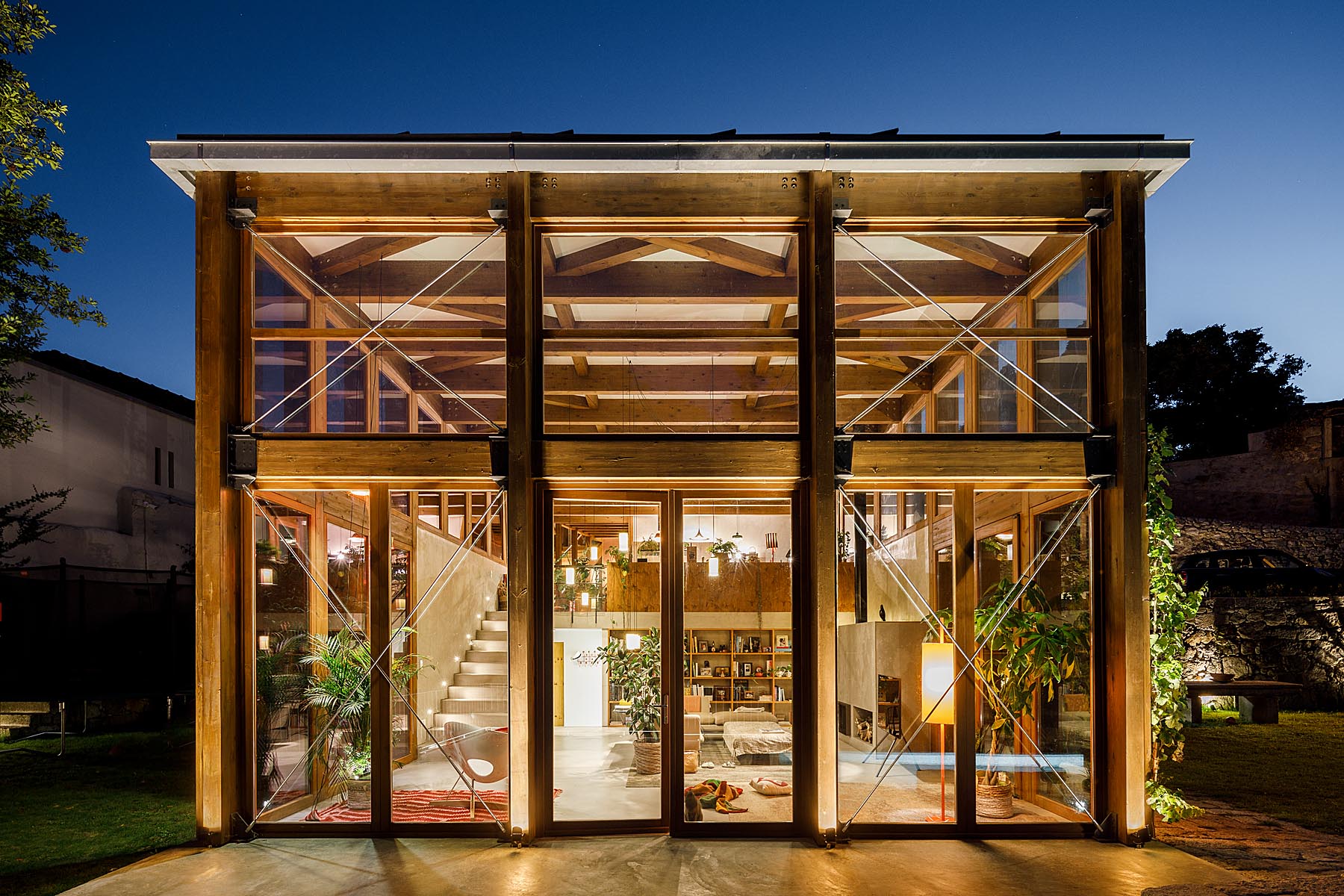DESCRIÇÃO DO PROJETO / PROJECT DISCRIPTION
"O território «Caminhos do Romântico» na cidade do Porto (Portugal) apresenta características únicas, misturando casas burguesas com habitação popular, intercalando os jardins repletos de cameleiras e outras espécies exóticas com hortas e quintais mas também vários exemplares de arqueologia industrial. Uma parte importante destes percursos faz-se por vias que apresentam características marcadamente rurais, com muros altos das antigas quintas e pelas fontes, chafarizes e lavadouros. A nossa intervenção localiza-se num desses percursos, mais concretamente no percurso que vai do Gólgota até Massarelos, compreendendo pontos como a Faculdade de Arquitectura da Universidade do Porto, a Casa da Agustina Bessa-Luís e outras casas burguesas e bairros de operários. Todo o conjunto é envolvido por uma mancha densa de verde e o rio Douro, ao fundo, é um elemento omnipresente.
A casa primitiva encontrava-se totalmente em ruína, tendo sido recuperada utilizando as técnicas e a linguagem arquitectónica convencional da época. A ampliação do edificado fez-se a uma cota mais baixa, tirando partido dos socalcos, recorrendo à madeira e ao betão, demarcando claramente em termos cronológicos a adição do original. Todos os muros do perímetro foram recuperados, tal como os muros de contenção dos socalcos, o mesmo se passando com o jardim tendo sido preservadas as espécies existentes e incorporadas outras que acordo da especificidade do local. A piscina foi projectada de forma a não alterar a orografia do terreno. O resultado global revelou-se bastante harmonioso, sendo que os novos elementos adicionados são praticamente invisíveis para quem circule pelos Caminhos do Romântico.
O terreno estende-se por três socalcos voltados a nascente com um edifício com quatro pisos destinado à zona mais privada. Dada a pequena dimensão deste edifício, propos-se a ampliação da área através da introdução de dois novos elementos: um volume para extensão da área da habitação e uma piscina. O novo volume contempla áreas de uso mais público como o átrio de entrada, cozinha, sala e apoio da piscina. Surge implantado perpendicularmente ao edifício existente e é composto por dois pisos, estendendo-se para nascente acompanhando e relacionando-se a várias cotas com os socalcos existentes no terreno, distribuindo desta forma as diferentes utilizações como as diferentes zonas de estar, percursos.
Esta intervenção conseguiu conciliar as necessidades de uma família numerosa com as condicionantes resultantes da recuperação do património edificado respeitando a especificidade do lugar e do próprio Plano Diretor Municipal. A solução encontrada - a acoplagem de um corpo construído em madeira e vidro - permite ampliar a área habitável do edifício preservando a integridade da pré-existência e sem entrar em conflito com esta, ao mesmo tempo que permite uma comunicação plena e eficaz com o jardim. A escolha da madeira permite, de alguma forma, anular o peso da ampliação relativamente extensa que teve se executar, e diferenciar a intervenção contemporânea do edifício oitocentista."
"The “Caminhos do Romântico” territory in the city of Porto (Portugal) has unique characteristics, mixing bourgeois houses with popular housing, interspersing gardens full of camel trees and other exotic species and with backyards but also several examples of industrial archeology. An important part of these routes is made through paths that have markedly rural characteristics, with high walls of the old farms and by the fountains and old community washing tanks. Our intervention is located in one of these routes, more specifically in the route that goes from Golgota to Massarelos, comprising points such as the Faculty of Architecture of the University of Porto, the «Casa da Agustina Bessa-Luís» and other bourgeois houses and workers houses. The whole set is surrounded by a dense patch of green and the Douro River, in the background, is an omnipresent element.
The primitive house, which was completely in ruins, was recovered using the techniques and conventional architectural language of the original historical period. The extension of the building was made at a lower level, taking advantage of the terraces, using wood and concrete, clearly demarcating the addition and the original in chronological terms. All the walls of the perimeter were recovered, as well as the retaining walls of the terraces, as well as the garden, the existing species were preserved and others were incorporated according to the specificity of the place. The pool was designed in such a way as not to modify the orography. The overall result has proved to be quite harmonious, with the new elements added being practically invisible to anyone traveling through the «Caminhos do Romântico». The ground extends over three terraces facing east with a building with four floors destined to the most private area. Given the small size of this building, it was proposed to expand the area by introducing two new elements: a volume to extend the housing area and a swimming pool. The new volume includes areas for more public use such as the entrance hall, kitchen, living room and pool support facilities. It appears perpendicularly to the existing building and consists of two floors, extending to the east, following and relating to several levels with the terraces on the lground, thus distributing different uses such as different living areas, paths, etc.
This intervention managed to reconcile the needs of a large family with the conditions resulting from the recovery of the built heritage, respecting the specificity of the place and the Municipal Master Plan itself. The solution found - the coupling of a body made of wood and glass - allows to expand the living area of the building while preserving the integrity of the pre-existence and without coming into conflict with it, while allowing full and effective communication with the garden . The choice of wood makes it possible, in some way, to eliminate the weight of the relatively extensive expansion that had to be carried out, and to differentiate the contemporary intervention from the 19th century building."

